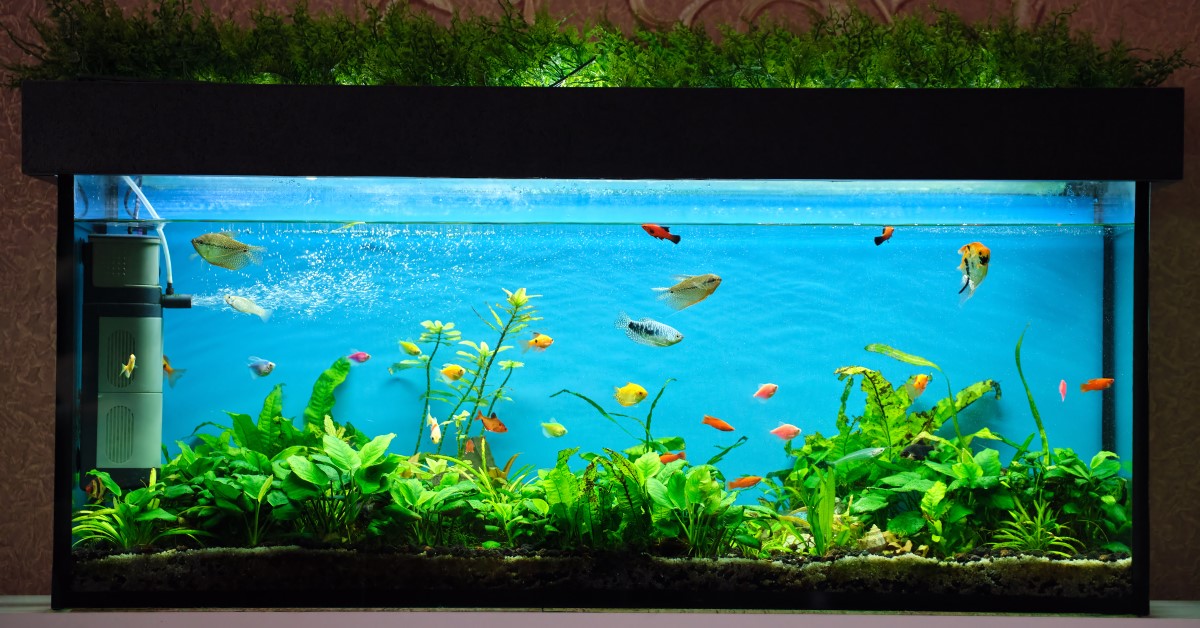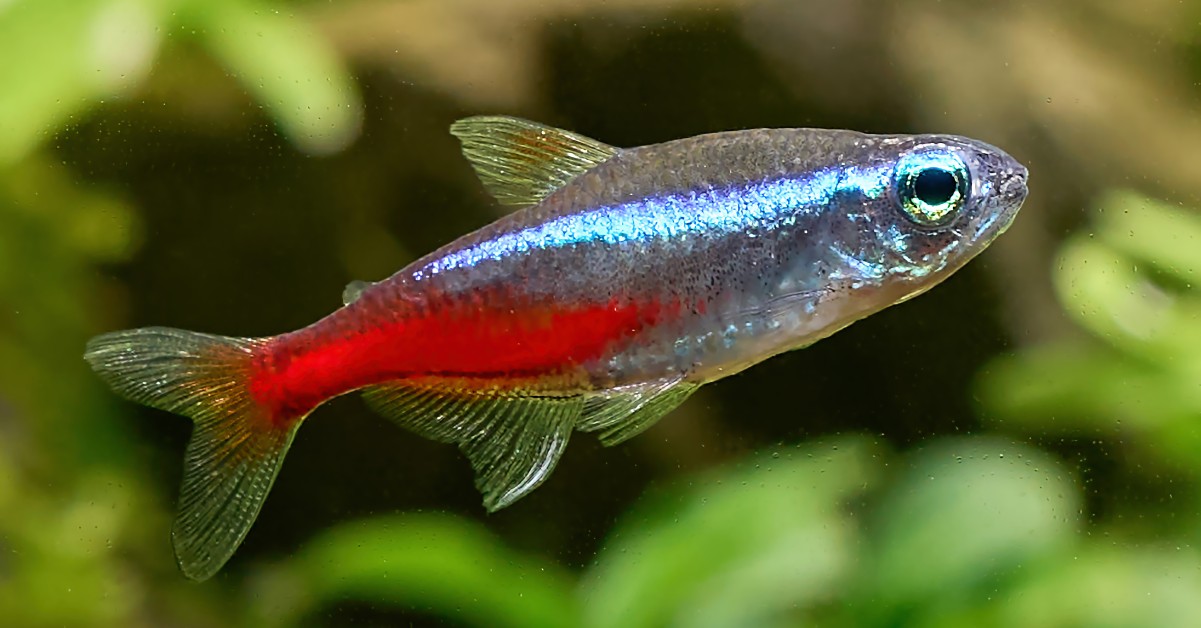Choosing the Right Fish for Your Saltwater Aquarium
Learn how to choose beautiful, hardy, and compatible fish species that will thrive in their new saltwater habitat.

Walking into a pet store with a large marine fish section can be a mind-blowing experience. There are so many fish to choose from! And if you make the right choices for your saltwater aquarium, you can enjoy the beauty of your fascinating aquatic friends for 10 or even 20 years with good care.
Many fish hobbyists prefer saltwater species because they come in a tremendous range of shapes and colors. They also differ in their diets, their levels of aggression, and their requirements for a healthy life in captivity.
When you’re first starting a saltwater fish aquarium, it's a good idea to choose just one fish of each species until you have a feel for how well they get along together. When the writer of this article just added a Titan Triggerfish to the tank, for instance, the next morning a $500 collection of giant clams had completely disappeared!
Territorialism and Aggression in Saltwater Fish
Some species are so territorial or so aggressive that they can devastate your other aquatic pets. You shouldn't try to house them in the same aquarium! But how do saltwater fish know which other species to pursue?
- Saltwater fish are more aggressive toward other fish with a similar shape. Herbivores, for example, tend to be rounder and thicker. Carnivorous fish tend to be longer. Fish recognize other species that have the same body contours as competitors.
- Saltwater fish are more aggressive toward other fish of similar colors. Seeing another fish with the same color scheme causes it to declare "Mine!"
- Saltwater fish are more aggressive toward species with different feeding behaviors. Fish that swim fast to gulp down food will attempt to drive away fish that nibble their food, like most herbivores.
That's a lot to learn about a lot of different fish. If you have never kept saltwater fish before, consider starting with a model community tank, like the ones below:
Saltwater Fish for a 2-Gallon (8-Liter) Aquarium
Want to start off small with a long-lived, colorful, active fish that is fun to watch? All you need is a single Neon Dottyback. It will never outgrow its tank. Provide it with a hiding place for its naptime. Neon Dottybacks are too aggressive to keep in a tank with other species.
Saltwater Fish for a 5-Gallon (19-Liter) Aquarium
A 5-gallon tank is enough room for two fish, or two fish and a shellfish. Consider getting a Firefish and also a Blackray Shrimp Goby, with a Snapping Shrimp for its partner. The Snapping Shrimp will spend its time digging through the sand and gravel you put in the bottom of the tank, occasionally interacting with the friendly and beautiful Goby. Your Firefish will add color and movement to the top of the tank.
Saltwater Fish for a 12-Gallon (45-Liter) Aquarium
With a 12-gallon saltwater tank, you can house three fish. Here is a colorful combination of compatible species:
- 1 Neon Goby
- 1 Royal Gramma
- 1 Yellowhead Jawfish
If you give your Jawfish a bed of sand, it will dig out a hiding place to share with its other two tankmates. The Goby will clean its other two tankmates.
Or you could try this Western-Pacific combination:
- 1 Purple Firefish
- 1 Yellow Assessor
- 1 Red Banded Shrimp Goby with its companion snapping shrimp
These four pets need both a sandy bottom and some rocky hiding places to stay happy and interactive.
20-Gallon (75-Liter) Peaceful Aquarium
At 20 gallons, you can assemble a coral reef, complete with live coral (called Acropora). One calm combination is:
- 1 Red Banded Shrimp Goby, with its companion snapping shrimp
- 1 Canary Fang Blenny
- 1 Firefish
- 2 Unarmed Perchlets
The Shrimp Goby and its companion shrimp will spend most of their time near the mouth of a cave or in the gravel and sand you place at the bottom of the tank. The Canary Fang Blenny will swim around in the water column providing color to your display, and the Firefish will socialize with the Shrimp Goby.
Be sure to get one large Perchlet and one smaller Perchlet, and to add them to your tank at the same time.
Don't mind mixing fish from different oceans? Try a colorful combination of one Royal Gramma, one Tailspot Blenny, and two Yellowstriped Cardinalfish.
Or, if you would prefer a 20-gallon tank full of tropical fish from the Western Pacific, a compatible combination is:
- 1 Firefish
- 1 Red Banded Shrimp Goby, with its companion snapping shrimp
- 1 Canary Fang Blenny
- 2 Unarmed Perchlets
These fish will be active without being combative.
It is always best to gain some experience successfully keeping saltwater fish in a 20-gallon tank before you move up to 55-gallon, 75-gallon, 100-gallon, 135-gallon, and larger tanks of fish. It is always better to keep peaceful "learner" fish, like those listed above, before you try to manage a tank full of aggressive fish like Lionfish, Triggerfish, Rabbitfish, Clownfish, and Tand Moray Eels.
The most important thing to remember about collecting saltwater fish is to avoid buying too many fish at one time. Don't load up on fish because it is a long drive to the fish store, or because a mail-order supplier has so many choices.
Always maintain a quarantine tank for your latest acquisitions. Make sure they are healthy before you add them to your display tank. Never buy so many fish that you are tempted to cram them all into the same tank at once. This invites disaster for your entire collection.
There is just one more rule for beginning saltwater fish fans:
Know your fish before you buy.
Butterflyfish, for example, are beautiful, but they feed on coral and cannot make the switch to ordinary aquarium foods. Black Damsels are beautiful when they are small, but they turn dark as they get older and attack other fish. A Blue Grouper is beautiful when it is young, but not quite so attractive when it reaches a length of 4 feet (48 inches/120 cm) as it gobbles everything in sight. If you buy a Seahorse, you need to make sure it is not an endangered species.
Always start small. Build on success, choose your fish with care, and you will enjoy a healthy, beautiful display of saltwater fish for many years to come.
Ready to start saving money on pet wellness care?
Then take a look at Mint Wellness, the pet wellness plan that provides fast reimbursement on routine pet care. Save on vaccinations, wellness exams, preventatives, dental, and more!
Learn More


